Markings used by criminals to identify properties.
There are many articles on purported markings left by criminals, making it appear that the criminals possess advanced knowledge of hieroglyphs! Some of these are represented below for interest sake only.

SAPS Guidelines
Then there are the SAPS guidelines, however with so much litter in our streets everyday, and almost everyday drivers throwing out beer bottles out car windows or those returning from local shebeens tossing the empty bottles everywhere, along with KFC and McDonalds packaging, the merits of these need to be questioned. Whether an empty beer bottle has a top put back on or not can hardly be evidence of a suspected targetted house.
According to the police, here are some of the markers used:
- “Z” painted on stop sign or the road – Houses in the street targeted for burglary.
- Pile of little stones – Dogs at home.
- Two big stones together – Two old people in the house.
- Stones in a row – Used to mark the number of people in the house.
- Swastika on road – House targeted for burglary.
- Direction of the swastika – Indicates which house is targeted.
- Coke tin, red cloth, crisp packet – Can expect resistance.
- Two Coke tins – Owner is armed.
- Coke tin opening towards the house – Someone is home.
- Upright Coke tin – Nobody home.
- White sorghum carton, plastic bag – Easy target.
- Sorghum carton facing the house – Target marked.
- White plastic bag on the fence – Easy target.
- Green used as a direction marker – Direction criminals should proceed in.
- Blue and/or blue and white packets – Easy target, someone inside will help.
- Crisp packets, normally neatly folded but sometimes weighted down with something inside the packet: packet facing the house – owner at home; packet facing the road – nobody at home.
- Shoes and soles near or by the gate – Nobody at home (direction of the shoes indicates escape route).
- Wrong number on house or cellphone – Checking if you are home.
- Electricity switched off at the main box – Be aware of leaving the house open as people inside are targets.
- Strange items in front of the house (like cardboard boxes, bricks or tree branches) – Do not stop to remove as you may be a target.
- Brick – Normally indicates a car to be stolen.
- Two or three bricks (normally new) – House robbery planned.
The police advise homeowners to immediately remove and dispose of all markers and to keep pavements neat and tidy.
Source: https://germistoncitynews.co.za/85359/look-out-for-these-markings-says-cpf/
Local markers
In this area, the most typical criminal markings are of course much simpler and use available resources to create the markers.
Tied veld grass

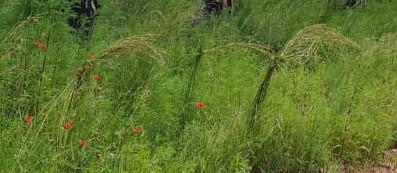
Unusual placement of items, rocks or stones
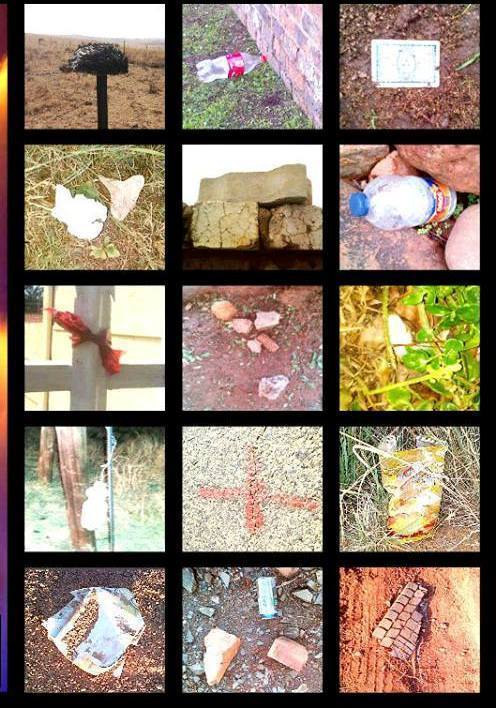


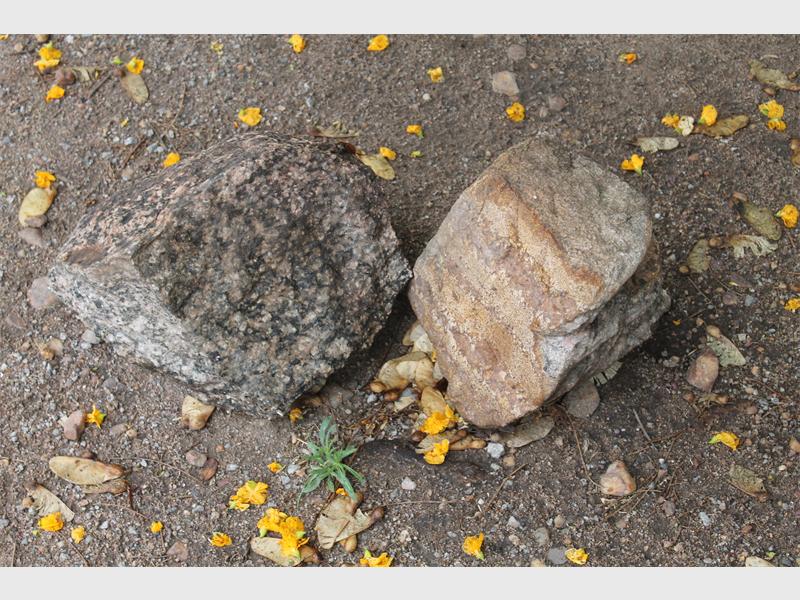
The bottom line, keep the outside of your property free of litter and stones, cut the veld grass and check for anything unusual.
Sometimes items are placed as a reminder where the easiest access point is or to identify an area at night.
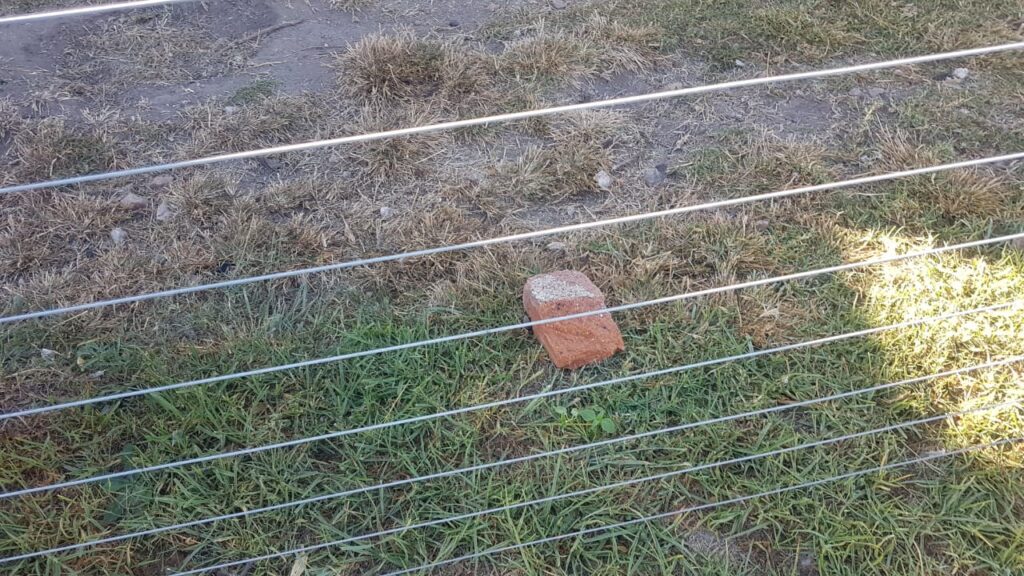

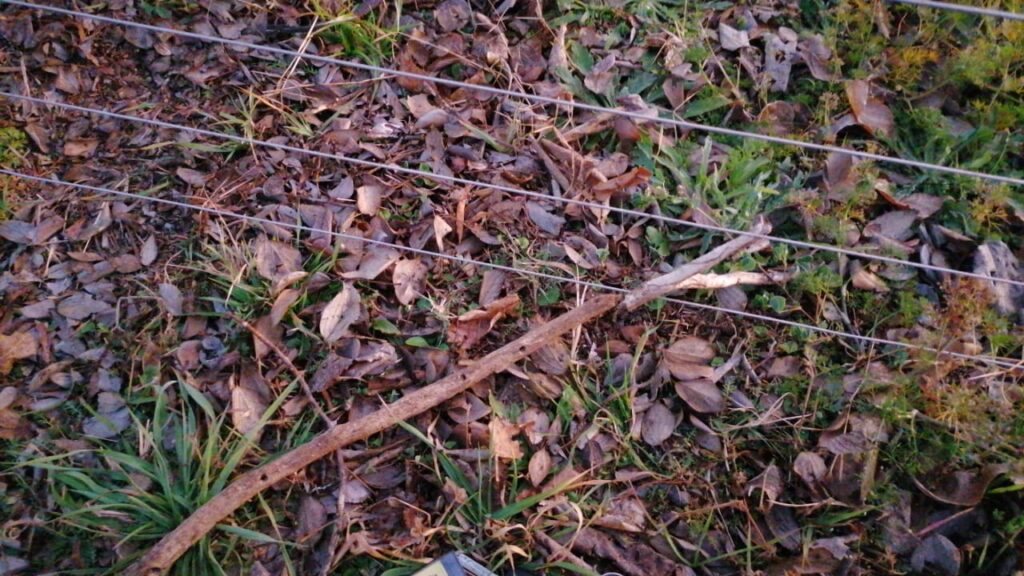
Common Sense Advice
In rural areas with numerous pedestrian along our roads, it is more likely that your property has already been assessed by prospective criminals during the day.
“First of all, let us look at research that were done by a former police Detective, Dr. Rudolph Zinn, from the University of South Africa. He conducted extensive research on house robberies by interviewing convicted suspects in jail. As from C.O.B.R.A. SELF-DEFENCE, here is an extract from his book that is titled “Home Invasion”.
“It is a popular urban legend that robbers mark houses that they plan to rob. There is speculation in the media and in popular discourse that different types of markers convey coded messages aimed at other groups of criminals or attackers. Commonly used markers are said to be plastic bottles and ribbons tied to a fence or crayon markings on the pavement or fence. The responses of the robbers in this survey suggest that marking is not common practice at all.
Two of the respondents said that they had at times marked a house or a farm before a robbery by placing an object on the pavement or next to the road in front of the house, or tying something that served as a ribbon to the fence. However, their purpose was not to leave a coded message but simply to make sure they could easily locate the targeted premises when they returned, especially if they did not know the neighbourhood very well. In an age where sms text messages are ubiquitous it is not clear why people so readily believe that a system of coded messages would be necessary. Robbers can in any case take photos of the target with a cell phone camera or send a sms message with directions.
A few of the robbers said they had on occasion placed marker objects to determine whether the residents of the house were away, for example an empty can or bottle in the driveway, or a piece of paper under the front door. Alternatively they would throw a can or bottle into the yard in a place where the residents would easily be able to see and remove it, or they would close the valve on the main water inlet pipe to the house. The next day they would return and see whether the object had been removed or the water valve had been opened. Another technique was to place a piece of adhesive tape between the closed gate and the gate post, or force a piece of paper or plastic into the gap. The robbers would later check whether the marker was still in place”.
Source: https://appsa.co.za/articles/marking-houses-for-burglary.html
Things to look out for:
- A suspicious car parked outside the house or driving in the neighbourhood
- Unfamiliar persons strolling in your street
- Somebody photographing your home
- Newspapers, sticker, and flyers
- Unauthorized workmen
- Suspicious calls
Read more: https://briefly.co.za/43411-common-burglar-signs-homes-south-africa-robbers-target-homes.html
Views: 16
